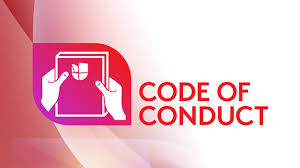Defining Compliance 2.0: Senior Leadership (Part 4 of 5)
 Individual commitment to a group effort – that is what makes a team work, a company work, a society work, a civilization work.~ Vince Lombardi
Individual commitment to a group effort – that is what makes a team work, a company work, a society work, a civilization work.~ Vince Lombardi
Like so many areas in life, a successful ethics and compliance program depends on teamwork. My last two postings, Parts 4 and 5, will highlight these essential partners – senior leadership and key compliance functions.
In a company culture, teamwork is vital. There is always room for individual accomplishments and rewards but when it comes to ethics and compliance, teamwork is an essential piece. A compliance program depends on joint acceptance, activity and commitment – most importantly by business leaders in the company.
I have seen too many companies that focus primarily on the performance of the board, the CEO and the CCO, and ignore the valuable contributions that senior executives can make to an ethics and compliance program.
A senior leadership team reflects the values of its CEO and board of directors. A CEO and a board communicate their values and act in accordance with those values. These values are directly communicated to the senior leadership, who in turn, carry the message to their direct reports and so on down the line.
It is one thing when the CEO and the board communicate a message and direct that a compliance plan be put into place. It is quote another when the senior leadership team commits to this same task – I like to call it – the compliance multiplier effect. Having 15 messengers at the senior level communicating a message of compliance is far more effective than just the voices of the CEO, CCO and the board.
One favorite strategy is to require each senior executive to conduct a training session each year. Of course, they will be trained to train. But you can imagine the impact a senior executive can have when conducting an ethics and compliance training session.
Getting buy in from the senior leadership team requires that the CEO and CCO design an affirmative strategy, complete with specific assignments, communications requirements (speeches, meetings) and discrete tasks designed to promote the ethics and compliance program.
CEO Direction: The CEO has to specifically address the compliance requirements and make it part of every senior executive’s contract and compensation plan. Once it is in writing, the CEO has to direct specific tasks, as needed, for the senior leadership team. Some companies include a requirement that each executive complete a specific task from a list of possible tasks, or as directed by the CEO. The expectations for promoting compliance have to be real and concrete. It is not enough to use fluff language like demonstrates a commitment to ethics and compliance. Real tasks and assignments have to be handed out and completed.
 Accountability: A senior leadership compliance effort can only be carried out if the CEO and each senior executive is held accountable. A senior executive who fails to complete a require assignment should be penalized. On the other hand, a senior executive who completes the tasks or goes above and beyond the required tasks to promote the message of ethics and compliance, should be rewarded.
Accountability: A senior leadership compliance effort can only be carried out if the CEO and each senior executive is held accountable. A senior executive who fails to complete a require assignment should be penalized. On the other hand, a senior executive who completes the tasks or goes above and beyond the required tasks to promote the message of ethics and compliance, should be rewarded.
Incentives (Real and Intangible): According to press reports, Wal-Mart included specific incentives for senior executives to complete ethics and compliance tasks, as detailed by the CEO and CCO. Specific bonuses were conditioned on completion of important ethics and compliance tasks. Real and meaningful incentives should be provided to senior managers to make sure they complete ethics and compliance tasks, and specific rewards should be reserved for extraordinary performance in this area.
Intangible benefits should be recognized as well – consideration for promotions should include assessment of ethics and compliance performance or contributions to the ethics and compliance program. Incentives do what they are meant to do – incentivize specific conduct.















